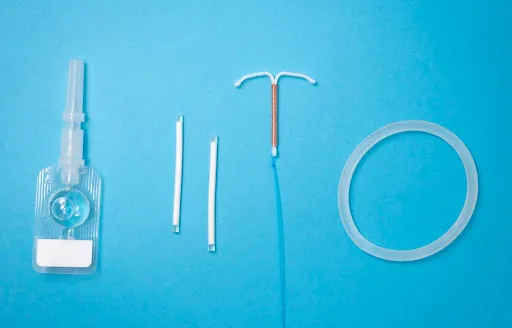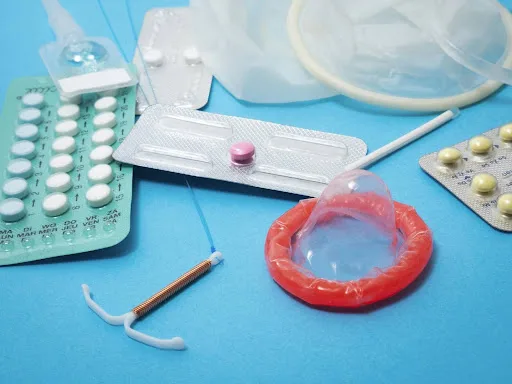IUDs are becoming an increasingly popular method of contraception for women worldwide. The copper IUD is a standout option, known for its effectiveness and durability. It’s a non-hormonal choice that suits many women who prefer or require an alternative to hormonal contraceptives. Below, we delve into the workings of intrauterine copper IUDs, discussing their mode of action, side effects, and long-term considerations.
Understanding Intrauterine Copper IUDs and Their Popularity

An intrauterine copper IUD is a small T-shaped device that’s placed into the uterus to prevent pregnancy. It’s made of plastic and a small amount of natural copper. Its popularity stems from its long-lasting nature, with a single device providing protection for up to 10 years. Brands like Paragard offer copper IUDs, which are especially favored by those seeking a hormone-free contraceptive option.
One of the key factors contributing to the popularity of copper IUDs is their convenience. Once inserted, there is no daily upkeep, unlike oral contraceptives or some other forms of birth control. In addition, because they are long-term, they can be more cost-effective over time. They also offer a quick return to fertility once removed, which is appealing for those planning future pregnancies.
Lastly, copper IUDs are accessible to a wide range of people. They are appropriate for individuals of various ages, whether they’ve had children or not. Because they are non-hormonal, they are also a suitable option for women who cannot use hormonal methods due to medical reasons or personal preference.
How Intrauterine Copper IUDs Prevent Pregnancy
The primary way that copper IUDs prevent pregnancy is by releasing copper ions into the uterus. Copper is toxic to sperm, impairing their mobility and viability, which prevents them from reaching and fertilizing an egg. The copper also induces an inflammatory reaction in the uterus that increases white blood cells, copper ions, and prostaglandins, creating an environment that is inhospitable to sperm.
Additionally, the presence of the IUD in the uterus creates a physical barrier to sperm and may prevent the sperm from ascending beyond the cervix. This, coupled with the copper’s spermicidal properties, assures a dual mechanism of action against pregnancy. Together, these factors create a nearly impermeable defense against unwanted conception.
It should be noted that while effective, copper IUDs do not protect against sexually transmitted infections (STIs). Thus, they are often used in combination with condoms in non-monogamous relationships to provide a comprehensive approach to sexual health and protection.
Insertion and Positioning of Intrauterine Copper IUDs
The insertion of a copper IUD is a quick procedure that healthcare providers can perform in an office setting. It typically takes only a few minutes to complete. A pelvic exam is done first to determine the position and size of the uterus, followed by the insertion of the IUD through the cervix and into the uterus using a specialized applicator.
For most women, the process might involve some discomfort, similar to menstrual cramps, but local anesthesia can be used to minimize pain. After insertion, the healthcare provider trims the IUD strings to a suitable length. These strings hang down through the cervix into the vagina and allow for device removal or checking placement by the user or healthcare provider.
Women are advised to check the presence of the IUD strings periodically, especially after menstrual periods. If the strings seem to have changed length or if they can’t be felt, users should contact their healthcare provider, as it could indicate that the IUD has moved and may need repositioning or replacement.
Potential Side Effects and Management Strategies of Copper IUDs

While the copper IUD is a safe and effective form of contraception, some women may experience side effects. The most common ones include heavier menstrual bleeding and more intense cramps during periods. These side effects may decrease after the first few months of use, but if they persist or become bothersome, women should consult their healthcare provider.
Rare but more serious potential side effects of the copper IUD include uterine perforation and pelvic inflammatory disease (PID). These are infrequent yet significant risks that require immediate attention. Women are encouraged to seek prompt medical care if they experience symptoms such as severe pain, fever, or abnormal vaginal discharge.
Altogether, the intrauterine copper IUD offers a reliable and long-term contraceptive solution for many women. Understanding how they work, proper insertion practices, the possible side effects, and the ease of reversibility helps individuals make informed decisions about their reproductive health. Always consult a healthcare provider to discuss the suitability of an IUD for your specific needs and to ensure its proper use and management.


